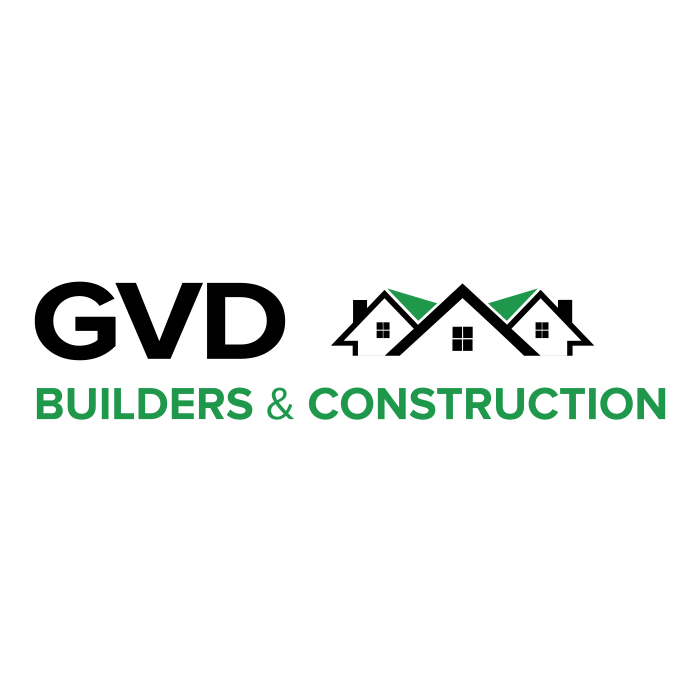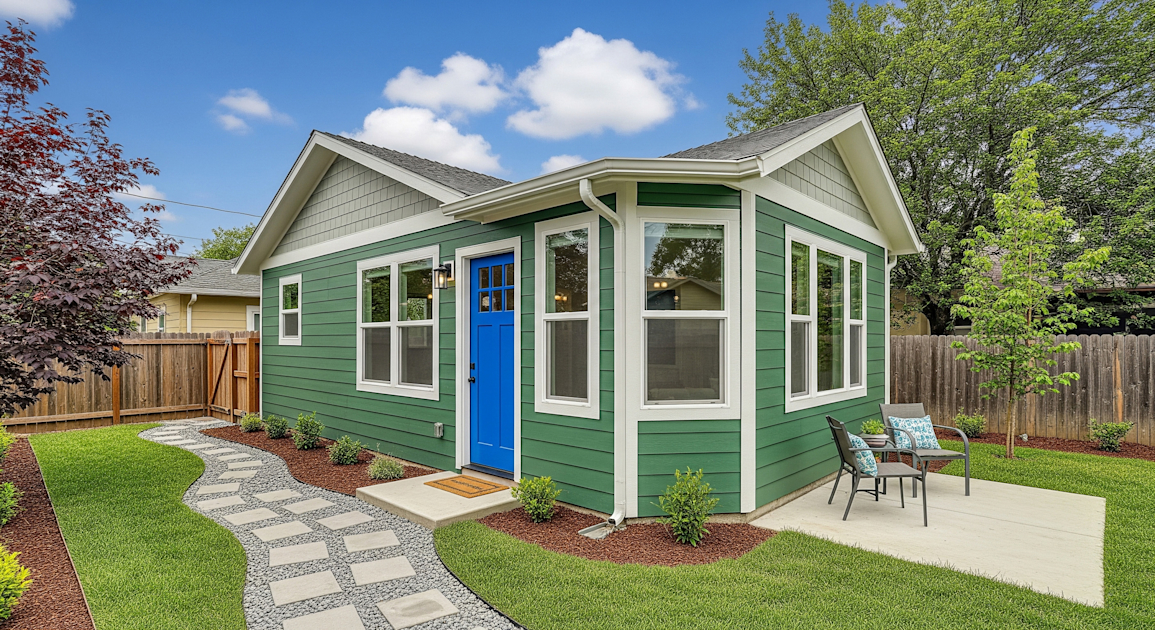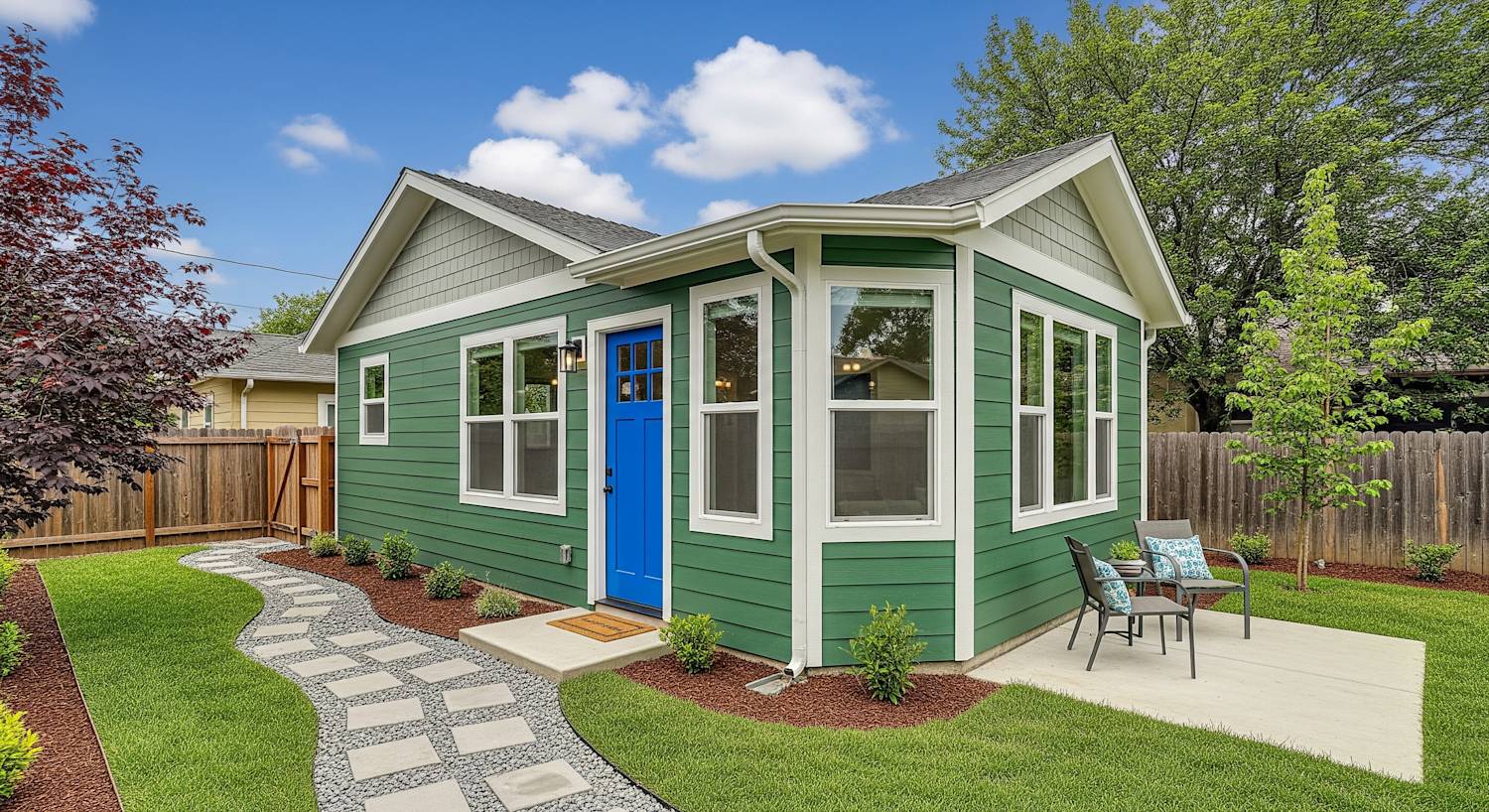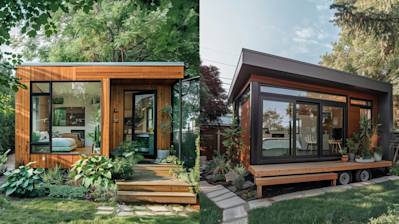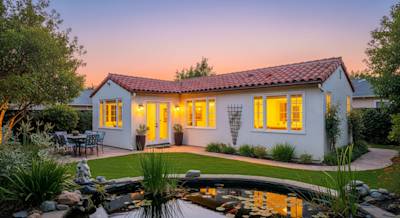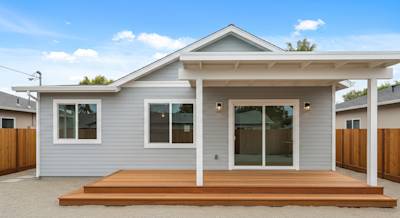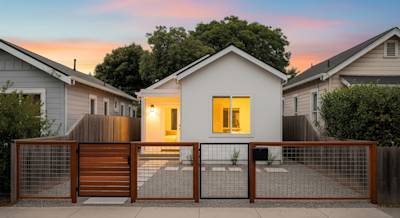An Introduction to Accessory Dwelling Unit Costs
Accessory dwelling units (ADUs), otherwise known as granny flats, backyard cottages, or in-law suites, are an increasing trend in urban and suburban areas across the country. Homeowners build ADUs to provide additional living space, enhance property value, or create a passive income source. However, what does an accessory dwelling unit cost? The following article aims to give you a detailed breakdown of the associated costs and how to prepare and budget for your ADU project.
Understanding Accessory Dwelling Unit Types
Before starting an ADU project, it's essential to comprehend the different types as each has separate, distinct cost implications. Three primary ADU types are:
- Detached ADU: A free-standing unit separate from the main house.
- Attached ADU: Built as an extension of the main house.
- Interior ADU: Constructed within the existing space of the main house.
Now let's delve into the various cost factors involved in creating an accessory dwelling unit.
Decomposing the Accessory Dwelling Unit Cost
In understanding the accessory dwelling unit cost, it's best to comprehend these costs line by line, starting from design and permitting, passing through construction, and ending with finishing touches.
Design and Permitting Costs
Design and permitting costs can vary greatly, ranging from $5,000 to over $20,000. These costs can include:
- Architect or Designer fees: These professionals provide critical design services.
- Engineer fees: Structural, civil, and soil engineers might be required.
- Permitting fees: Costs associated with county or city permit processes.
Remember, the design and permitting stage can span several months and requires a budget separate from the construction costs.
Construction Cost Per Square Foot
One of the most significant accessory dwelling unit costs to be considered is the construction cost per square foot. This cost can be between $250 and $400 per square foot, depending on location, ADU type, and materials. Therefore, a 600 square foot ADU could cost anywhere from $150,000 to $240,000 to construct.
Plumbing, Electrical, and HVAC Costs
Other significant factors in your ADU budget include the costs for plumbing, electrical works, and HVAC (heating, ventilation, and air conditioning).
- Plumbing: Independent plumbing systems add to the ADU cost significantly. Plumbing can range from $5,000 to $20,000.
- Electrical: An independent electrical system might be needed as well, costing between $4,000 to $10,000.
- HVAC: Depending on the climate, a full HVAC system may be needed, which can set you back $5,000 to $15,000.
Finishes and Appliance Costs
Final touches can make a significant difference in the total cost. Finishing and appliance costs can swing anywhere from $10,000 to $50,000, including components such as:
- Internal features: Flooring, bathrooms, kitchen cabinetry, and appliances.
- External elements: Roofing, siding, windows, doors, and landscaping.
Financing an Accessory Dwelling Unit
While accessory dwelling unit costs can seem daunting, there are multiple financing opportunities available:
- Personal savings: Ideal if you have enough saved up, as it saves you from interest-related costs.
- Home equity loans: If you've built significant equity in your home, this could be a worthy consideration.
- Renovation loans: Some banks offer loans specifically for renovation purposes, which can also be used for ADU construction.
- ADU Construction Companies: Some companies provide in-house financing options.
Remember, you should explore and consult with a financial advisor before deciding.
Frequently Asked Questions about Accessory Dwelling Unit Cost
Can financing options affect the total accessory dwelling unit cost?
Yes, the financing options you choose can significantly affect your overall accessory dwelling unit cost. While paying cash upfront for your ADU construction can eliminate long-term interest costs, many individuals turn to home equity loans, personal loans, or construction loans to finance their ADU project. Each of these options carry their own unique costs and interest rates, which can ultimately add to your project’s total expenses.
Are there any unexpected costs that can increase the accessory dwelling unit cost?
Unforeseen costs are almost always a part of home construction projects, ADUs included. These unexpected costs may arise from a variety of circumstances like unforeseen site conditions, revisions or additions to the initial design plan, changes in material costs, etc. It's prudent to have a contingency budget to account for these uncertainties when estimating your accessory dwelling unit cost.
Do site preparation and utility connections add to the accessory dwelling unit cost?
Yes, site preparation and utility connections can significantly contribute to the accessory dwelling unit cost. Site work can include anything from clearing and grading the land, installing sewer, water, and electric lines, getting rid of trees or debris, to creating a new driveway or walkway. The cost can vary dramatically depending on the site's current condition and what utility connections are presently available.
Does the type of accessory dwelling unit affect its cost?
The kind of accessory dwelling unit - whether it's a basement ADU, an attached ADU, or a detached ADU - can greatly impact the total ADU cost. The cheapest form to build is typically a basement or garage conversion, while a detached ADU usually tends to be the priciest. Each type carries its own set of costs and considerations, stemming from construction complexity and alterations required to the existing structure.
How do permit and inspection fees contribute to the overall accessory dwelling unit cost?
Permit and inspection fees are an essential part of constructing an ADU, and they can add significantly to your project's overall cost. The specific amounts vary widely depending on your local building department. Aside from the building permit itself, you may also need to secure electrical, plumbing, and mechanical permits. Costs can range from several hundred up to several thousand dollars.
Is there a cost difference between DIY and hiring a professional for an accessory dwelling unit project?
There's a notable difference in cost between taking a DIY approach and hiring a professional for your ADU project. Although a DIY project may save you money on labor costs initially, remember that professionals have the necessary expertise and experience to prevent costly errors, meet building codes and manage the project efficiently. Consider your skills and the scope of the project prior to deciding on the best route.
How does the choice of materials impact the accessory dwelling unit cost?
The choice of materials for your ADU project is a significant factor in determining its cost. Higher-end materials like natural stone countertops or hardwood floors will cost more than budget-friendly alternatives such as laminate countertops or resilient flooring. Additionally, the choice of exterior finishes, roofing materials, windows, doors, and other fixtures can affect your project’s cost. It's essential to balance your desire for quality with your budget limitations.
Can the size and design of an accessory dwelling unit influence the cost?
Yes, the size and design of your ADU can greatly impact the cost. Generally, the larger the unit, the higher the construction cost due to an increase in materials and labor hours required. Similarly, the complexity of the design can also affect the cost – A simple, uncomplicated design would be less expensive than one with complex features or high-end finishes.
Pros
Multiple Financial Benefits
Potential Income Source
One of the primary advantages of an accessory dwelling unit (ADU) is the potential income it brings in. Constructing an ADU allows homeowners to rent out the additional dwelling unit to tenants, thereby creating a regular source of income that could offset costs associated with building the ADU, as well as other household expenses.
Increasing Property Value
In addition to generating rental income, the construction of an ADU can also increase the market value of a property. ADU not only enhances the efficiency and aesthetic appeal of a property but also extends the functional living space, making the property more appealing to potential buyers.
Financial Security and Flexibility
Homeowners also leverage ADUs to achieve financial security and flexibility. ADUs can serve as a long-term investment that can provide security during uncertain economic periods, which could be especially important for retirees or those nearing retirement age. In addition, the income derived from the rental of the ADU can be used to pay mortgages, easing financial pressure.
Opportunities for Community Building
Provides Living Space for Extended Family or Aging Parents
ADUs often provide additional space for extended family members or aging parents. This allows for multi-generational living where family members are close by while still maintaining a sense of independence, primarily through separate living spaces.
Contributes to Affordable Housing
Building an ADU might make housing more affordable for renters, as ADUs are typically less expensive than conventional rental units due to their smaller size. This affordability could contribute positively to the wider problem of housing shortages and high rental costs.
Cons
High Initial Costs
Construction or Conversion Expenses
One of the major drawbacks of ADUs is the high initial cost to design and build the unit, or convert an existing structure into an ADU. Depending on the desired design, size, location, and construction standards, this cost could reach up to several tens of thousands of dollars, or even higher.
Unpredictable Costs
In construction projects like ADUs, it's quite common to experience cost overruns due to unforeseen issues such as soil problems, changes in local regulatory requirements, delays, and increases in material costs. These unpredictable factors could potentially escalate the entire project's cost.
Non-refundable Permit Fees
Depending on where you live, permit fees to build an ADU can also be quite significant and non-refundable. Even if the project doesn't get off the ground for some reason, these permitting fees will not be returned.
Dangers of Overcapitalization
No Guarantee of Increased Property Value
There's no guarantee that the cost of constructing an ADU will significantly increase the property’s market value. If a homeowner is considering selling the property soon after building the ADU, they might not recoup the entire amount invested in the ADU's creation.
Increased Property Taxes
Adding an ADU to a property is likely to increase its assessed value, which could result in higher property taxes. This could put financial strain on homeowners, particularly if the increased tax burden outweighs the income derived from renting the ADU.
Complexity and Limitations
Complex Zoning Regulations
Building an ADU may be subject to complex zoning regulations in some areas which might dictate the size, location, design, parking requirements, or even who can live in an ADU. These regulations can heavily limit the homeowner's freedom to use their property as they see fit.
Privacy Concerns
Sharing a property with tenants can mean less privacy for homeowners. Negative experiences with a tenant could significantly impact a homeowner's quality of life, with potential problems ranging from noise disturbances to disputes over rent or property boundaries.
Tenant Management
Finding the right tenant and managing the rental process involves time, stress, and the possibility of financial losses owing to unpaid rent or property damage. The homeowner may need to become a landlord, which involves legal responsibilities and implications, unless they hire a property management company which will cut into the potential rental income.
Summary
So, after all we've discussed, you can see that the accessory dwelling unit cost can vary significantly depending on your specific needs and the quality of materials you choose. From design and planning to construction materials and labor, each aspect influences the total expenditure. But don’t forget, building an ADU is not just about immediate costs. Think about the potential long-term financial benefits like property value increase and rental income.
Now, let's talk about location too. It's undeniable that the cost of building an accessory dwelling unit can also be strongly influenced by the area you are in. Labor costs, city fees, and permits are all susceptible to local pricing. But no matter where you are, it’s smart to review all your options before diving in. After all, an ADU is a substantial investment that can greatly improve your property.
Lastly, remember that an accessory dwelling unit cost isn't strictly about money - there's also a price to pay in time and effort. Depending on the design you choose, your ADU can take anywhere from a few months to over a year to complete. It may be a bit of an undertaking, but the payoff is a versatile space that can serve a variety of purposes, from generating rental income to providing a cozy home for family members.
About GVD Builders
GVD Builders is your friendly neighborhood construction and remodeling partner based in Sacramento, CA. With over 30 years under our tool belts, we've grown to master the art of building dream homes and transforming spaces. Hey, we're not just builders; we’re families helping families, bringing visions to life with utmost professionalism, quality, and transparency. At GVD, we place our customer wishes at the heart of every hammer swing - after all, it's your dream we're building, and doing it right is our commitment! So whether you're planning to remodel your kitchen, bathroom, or the whole house, know that you're in brilliant, safe, and experienced hands with GVD.
The content provided here is intended for informational purposes only and should not be considered professional advice. We recommend consulting with a qualified specialist before making any decisions related to your project. Pricing, product availability, and specifications are subject to change without notice. Any references to specific brands or products represent our opinions and do not constitute official endorsements or guarantees of performance.
